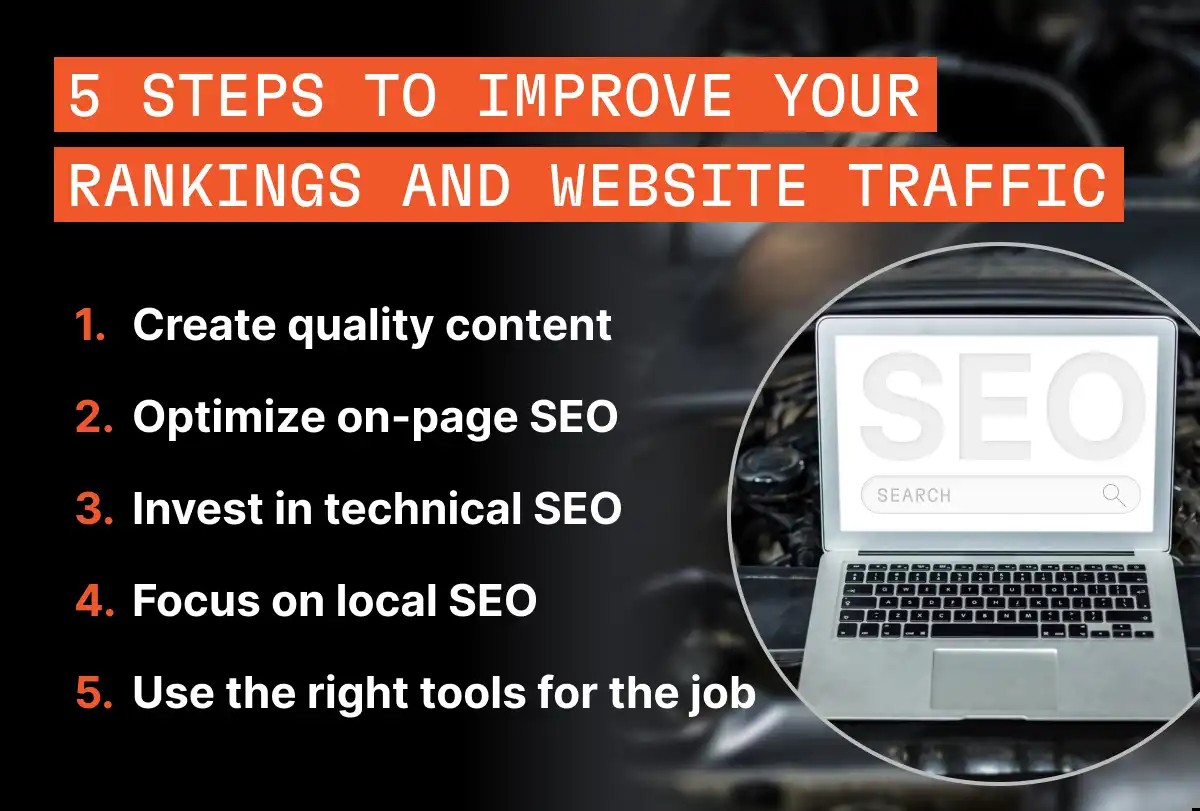The automotive repair industry is constantly evolving, and one of the most dynamic shifts is the rise of mobile auto repair businesses. Instead of customers coming to a fixed location, mobile mechanics bring the repair shop directly to the customer’s location – whether it’s their home, workplace, or even the roadside. If you’re considering capitalizing on this growing demand and wondering how to run a mobile auto repair business, this guide will provide the essential steps to get you started and thrive.
Setting Up Your Mobile Auto Repair Business
Starting any business requires careful planning and preparation, and a mobile auto repair service is no exception. Here’s what you need to consider when setting up your operation:
Business Plan and Legal Structure
A solid business plan is your roadmap to success. It should outline your services, target market, pricing strategy, marketing plan, and financial projections. Decide on your business’s legal structure – will you be a sole proprietorship, LLC, or another entity? This decision impacts liability, taxes, and administrative processes. Consulting with a legal and financial professional is advisable at this stage.
Necessary Tools and Equipment
Your tools are your trade. Invest in high-quality, durable tools that are specifically suited for mobile work. Consider the range of services you plan to offer and equip your mobile workshop accordingly. This might include:
- Diagnostic tools: OBD-II scanners, multimeters, and specialized diagnostic software are crucial for modern vehicles.
- Standard mechanic tools: Socket sets, wrenches, screwdrivers, pliers, and torque wrenches are essential.
- Specialty tools: Depending on your service focus, you might need brake tools, alignment tools, or AC service equipment.
- Mobile-specific equipment: A reliable generator, air compressor, and portable lighting are vital when working on-site.
Vehicle and Setup
Your service vehicle is your mobile workshop and business card. Choose a van or truck that’s large enough to carry all your tools and equipment safely and efficiently. Organize your vehicle for optimal workflow:
- Tool storage: Invest in shelving, drawers, and organizers to keep tools accessible and secure during transit.
- Work space: Ensure you have a clean and well-lit workspace inside the vehicle, if possible, or plan to set up efficiently at the customer’s location.
- Branding: Professionally wrap or sign your vehicle with your business name, logo, and contact information. This acts as mobile advertising and builds brand recognition.
Insurance and Licenses
Operating legally and protecting your business are paramount. Secure the necessary business licenses and permits to operate in your service area. Adequate insurance coverage is non-negotiable and should include:
- General liability insurance: Protects against property damage or bodily injury claims.
- Professional liability insurance (Errors and Omissions): Covers claims of negligence or mistakes in your service.
- Commercial auto insurance: Essential for your service vehicle, covering accidents and liability while driving for business.
- Worker’s compensation insurance: If you plan to hire employees, this is legally required in most places and covers employee injuries.
Operations and Logistics for Mobile Auto Repair
Efficient operations are key to running a profitable mobile auto repair business. Consider these operational aspects:
Scheduling and Dispatch
Efficient scheduling and dispatching are critical for managing a mobile service. Implement a system to:
- Manage appointments: Use scheduling software or apps to book appointments, send reminders, and manage your calendar.
- Optimize routes: Plan efficient routes to minimize travel time and fuel costs. GPS navigation and route optimization tools can be very helpful.
- Dispatch efficiently: Communicate job details clearly to your mobile mechanics and track their locations and job status in real-time if you have a team.
Customer Service and Communication
Exceptional customer service is crucial for building a loyal customer base. In mobile repair, communication is even more vital:
- Clear communication: Confirm appointments, provide ETAs, and keep customers informed about the repair process.
- Professionalism: Maintain a professional demeanor, be punctual, and respect the customer’s property.
- Transparent pricing: Provide upfront estimates and explain all charges clearly.
- Follow-up: After service, follow up with customers to ensure satisfaction and request reviews.
Payment Processing
Offer convenient payment options to your customers. Mobile businesses need flexible payment solutions:
- Mobile payment processing: Use a mobile POS system to accept credit cards, debit cards, and mobile payments on-site.
- Invoicing and digital payments: Send invoices electronically and offer options for online payments.
- Cash and checks: While less common, be prepared to accept cash and checks as payment methods.
Managing Inventory and Supplies
Efficient inventory management keeps your mobile workshop stocked and ready:
- Stock common parts: Carry frequently used parts and supplies to complete common repairs on the spot.
- Supplier relationships: Establish relationships with reliable parts suppliers for quick access to less common parts.
- Inventory tracking: Implement a system to track your parts inventory and reorder supplies proactively.
Marketing Your Mobile Auto Repair Business
Getting the word out is essential for attracting customers. Effective marketing strategies for a mobile auto repair business include:
Online Presence
In today’s digital age, a strong online presence is non-negotiable:
- Professional website: Create a website that is mobile-friendly, informative, and easy to navigate. Include your services, service area, contact information, online booking options, and customer testimonials.
- Social media marketing: Utilize social media platforms to engage with potential customers, share helpful content, and promote your services.
- Search Engine Optimization (SEO): Optimize your website and online content to rank well in search engine results for relevant keywords like “mobile mechanic near me,” “on-site auto repair,” and “[city] mobile auto repair.”
Local SEO and Google My Business
Local SEO is particularly crucial for mobile services targeting specific geographic areas:
- Google My Business (GMB): Create and optimize your Google My Business profile. Ensure your service area is clearly defined, your contact information is accurate, and encourage customer reviews. Regularly post updates and photos to your GMB profile.
- Local directories: List your business in online directories like Yelp, Angie’s List, and local business directories. Ensure consistent NAP (Name, Address, Phone number) information across all listings.
- Location pages: Create location-specific pages on your website if you serve multiple areas, targeting keywords for each area.
Networking and Partnerships
Building relationships within your community can generate valuable referrals:
- Fleet accounts: Target local businesses with fleets of vehicles for ongoing maintenance and repair contracts.
- Dealership partnerships: Partner with dealerships to provide mobile repair services for warranty work or customer convenience.
- Insurance partnerships: Connect with insurance companies to become a preferred provider for roadside assistance and mobile claims.
- Community involvement: Participate in local events and sponsor community initiatives to increase visibility and build trust.
Customer Reviews and Reputation Management
Positive reviews are powerful marketing tools. Actively manage your online reputation:
- Request reviews: Make it easy for satisfied customers to leave reviews on Google, Yelp, and other platforms.
- Respond to reviews: Acknowledge both positive and negative reviews professionally. Address concerns raised in negative reviews constructively.
- Monitor your online reputation: Use online reputation management tools to track reviews and mentions of your business online.
Growing and Scaling Your Mobile Business
Once your mobile auto repair business is established, consider strategies for growth and scaling:
Expanding Service Area
As demand grows, consider expanding your service area gradually. Research new areas and adjust your marketing and logistics accordingly.
Hiring Technicians
To handle increased workload, you may need to hire additional mobile mechanics. Carefully vet and train technicians to maintain your quality standards and customer service.
Adding Services
Expand your service offerings based on customer demand and market opportunities. This could include specialized services like mobile tire replacement, mobile detailing, or advanced diagnostics.
Final Thoughts
Running a successful mobile auto repair business requires a combination of automotive expertise, business acumen, and excellent customer service. By focusing on efficient operations, effective marketing, and building a strong reputation, you can tap into the growing demand for convenient, on-location auto repair services and build a thriving business. Embrace the mobility and flexibility of this business model, and you’ll be well-positioned for success in the evolving automotive service landscape.



